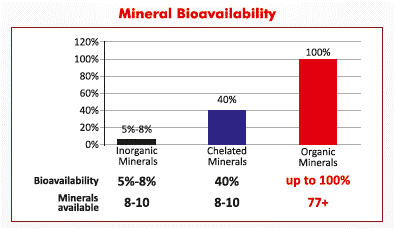Worldwide governments cannot do anything to re-mineralize the soil. Our mineral nutrition is through diet of plants. Plants extract & assimilate metallic minerals from soil as they grow. Among major elements Oxygen, Hydrogen, Carbon and Nitrogen make up 96% of the body. The remaining 4% of our body is basically made up of in part of 84 minerals, most of which are no longer readily available in our soil.
Scientists have grouped minerals in two categories – Major minerals and Trace minerals. Trace minerals are made up of less than one hundredth of 1% of your body by weight. But they are essential to get optimum performance of health and production.
Minerals are necessary in aquaculture which involves in various biochemical processes at entire body.
Minerals are necessary for maintenance of osmotic pressure, acid-base balance, regulation of pH of blood, haemolymph, urine and other body fluids. They play a vital role in soft tissues, enzymes, some vitamins, hormones and respiratory pigments which are essential for muscle contraction and transmission of nerve impulses.
Hence, minerals should be incorporated in diets for the optimal growth and production.
Increased bioavailability of organic mineral will radically reduces required inputs and decrease waste discharges. For, example, the minerals such as chromium, cobalt, copper, iodine, iron, manganese, molybdenum, selenium and zinc, are required in small quantities and participate in a wide variety of biochemical processes.
These minerals are essential and they will involve in cellular metabolism, formation of skeletal structures, maintenance of colloidal systems, regulation of acid-base equilibrium and other physiological functions. However compared to terrestrial animals, our understanding of the micro mineral requirements of shrimp/fish is often incomplete.
Why Do We Need Minerals?
“Mineral needs are more important than vitamin needs since your body cannot make minerals”
Dr. Henry S., M.D.
You can trace every sickness, every disease and every ailment to mineral deficiency.
Dr. Linus Pauling Ph.D.
(Two times Nobel Prize Winner)
Trace minerals are supplemented in the form of:
1. Inorganic Minerals
2. Chelated Minerals
3. Organic Minerals
Inorganic Minerals:
They are derived from nonliving organisms like rocks and are used as Sulphides, Oxides or Carbonates. These minerals are hydrophobic by nature and bear positive electric charge which hampers their utilization and absorption in the body. Their absorption in the body is up to 8% and the balance 92% is excreted which pollutes the environment.
These minerals are prooxidant and oxidize the feed affecting feed quality and necessitating the use of antioxidants to maintain feed nutritional value.
NRC estimates of minerals absorption:
Cu - 1 – 5 %
Mn - 0.75%
Zn - 15%
Chelated Minerals:
These are Inorganic minerals which are chelated with an Organic Carrier (Ligand).
Importance of Ligand :
1) It should be inseparable from Inorganic Mineral.
2) It should not be torn apart as mineral travels in GI tract.
3) Ligand must protect mineral from being tied up by antagonist.
4) Ligand with high stability to ensure that mineral arrives intact to site of absorption.
5) Molecular weight of mineral plus molecular weight of Ligand combined are critical for chelated trace mineral absorption.
With the improvement in chelating technology in chelating Inorganic Minerals most of the organizations call Inorganic minerals as Organic since they mimic the action as Organic minerals but their absorption and utilization rate has reached only up to 40%.

Organic Minerals:
Keeping this in mind, Guybro Chemical Pvt Ltd, has newly formulated “Vannamin (77 Organic minerals)” which deliver direct benefit – but in addition they increases the bioavailability of supplemental trace minerals from the diet, also keeps the aquatic animals healthy and choice to aquaculture farmers for better yield.
Characteristics of 77 Organic Minerals in Vannamin are:
- These are Organic Micro minerals, Nano particle size
- 1,00,000 times smaller than metallic mineral.
- 10,000 times smaller than RBCs
- Equal size of water molecule, easy digestion and assimilation.
- These are predigested & hydrophilic.
- Boosts immune response.
- Flushes out heavy metals deposited in the body.
- Stimulates intracellular utilization of oxygen.
- Have negative electric charge (Zeta Potential)
Conclusion
Hence, nutritionally complete diets are essential in aquaculture and micronutrients must be complete in sufficient levels in the prepared diets to support optimal growth, FCR, disease control and production efficiency.
Dietary supplementation of some of these micronutrients product like Vannamin in surplus of least amount condition levels has been shown to have a positive power on immunity, as well as resistance to and recovery from microbial disease. And also keeps the animal healthy and stress free.
Attention in organic minerals has particularly been strengthened by the importance of their roles in immune defence and antioxidative resistance.

